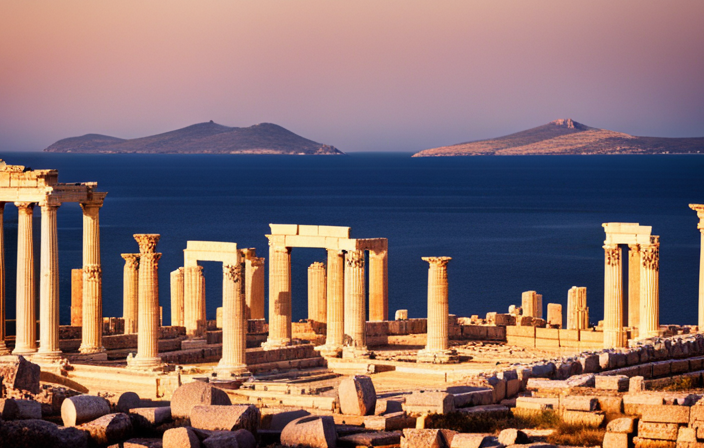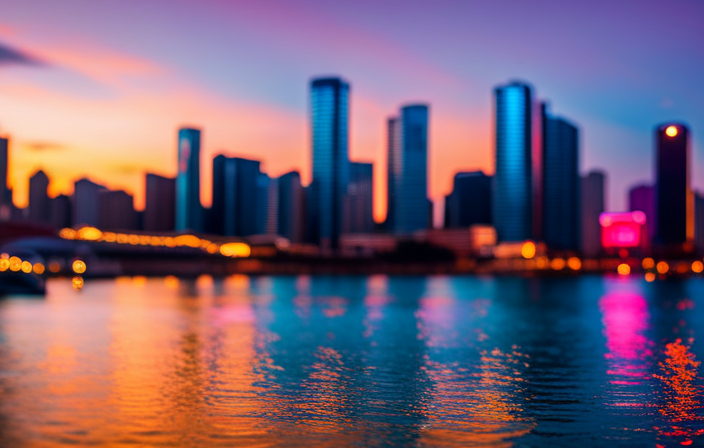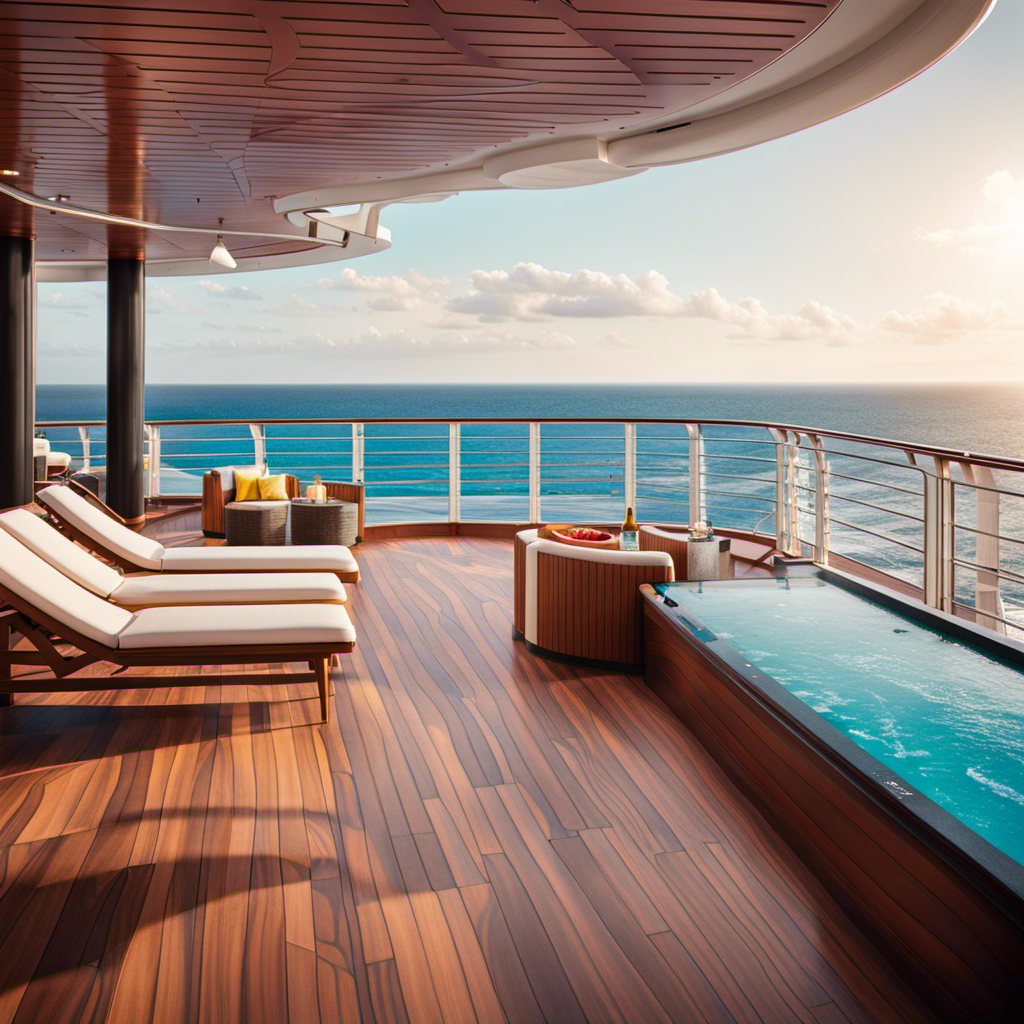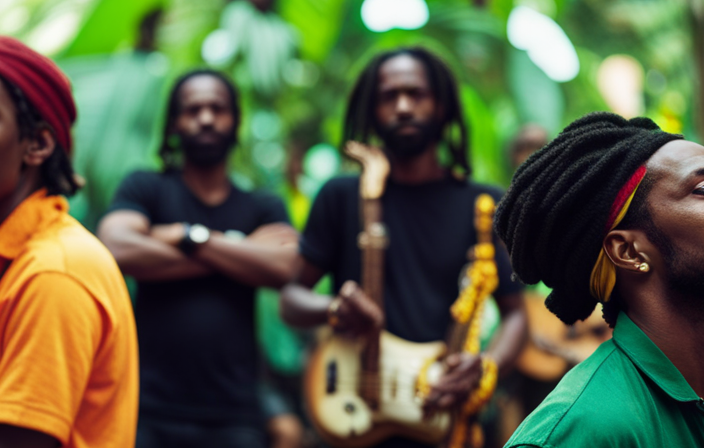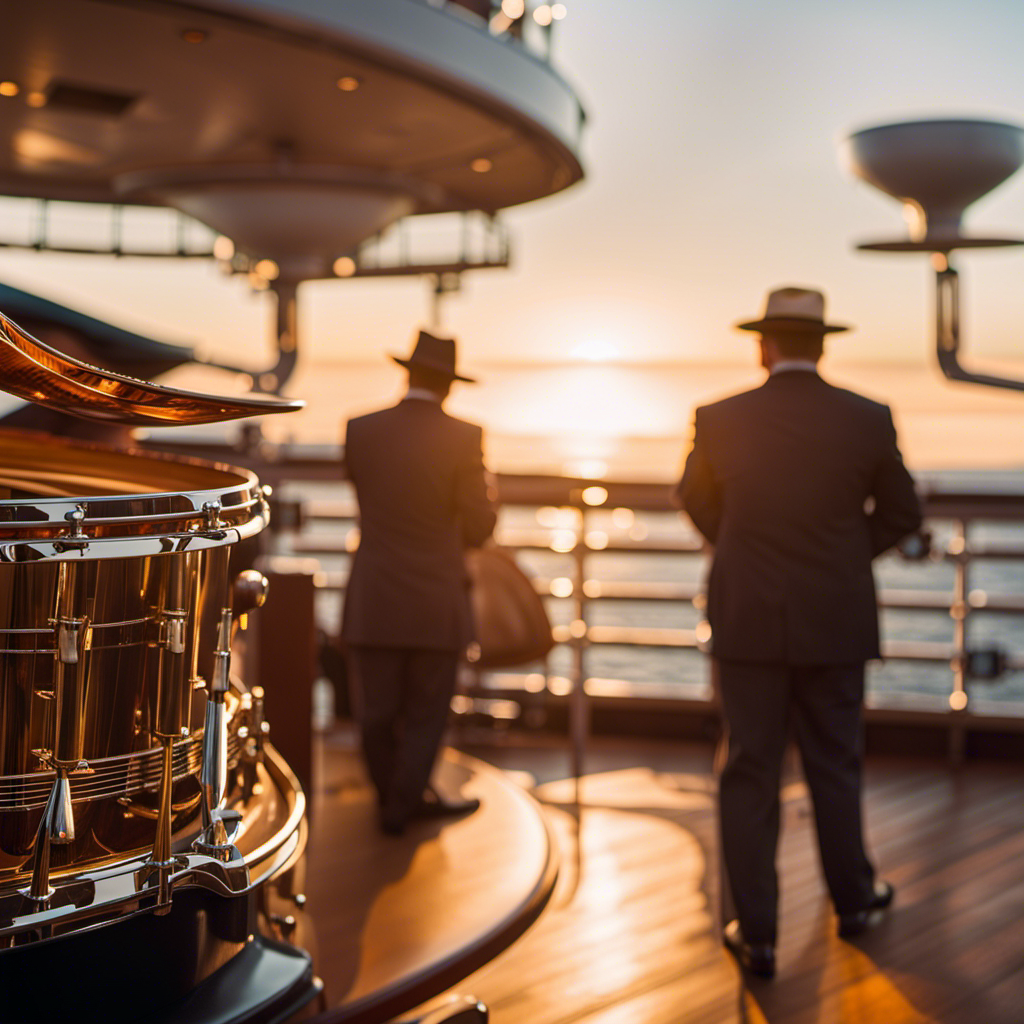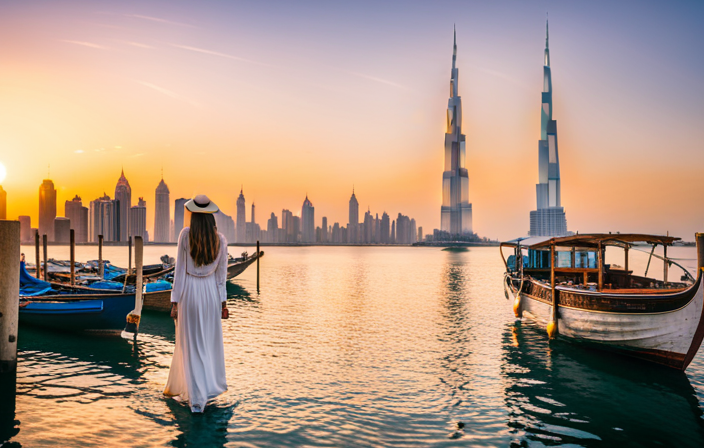Upon arriving at Delos, I’m instantly consumed by a profound feeling of wonder and inquisitiveness. This small Greek island conceals a mystery so ancient and revered that it is illegal for any person to be born or die on its territory.
Legends tell us that Artemis and Apollo, the gods themselves, were born on this hallowed ground. With its ruins and remnants of a thriving community, Delos stands as a testament to its illustrious past.
Join me as we delve into the divine origins and ancient marvels of this sacred island.
Key Takeaways
- Delos is believed to be the birthplace of Artemis and Apollo.
- It is illegal for humans to be born or die on the island.
- Delos was a free trade port and a hub for exchanging goods and slaves.
- Delos receives 100,000 visitors annually, mainly day-trippers from other islands.
Believed Birthplace of Artemis and Apollo
I believe that Delos is widely believed to be the birthplace of Artemis and Apollo. Delos holds immense significance as a sacred sanctuary and a popular tourist attraction.
In ancient times, it was considered a holy place where humans were not allowed to be born or die. This strict rule was enforced by Pisistratus, the ruler of ancient Athens. Apollo, the god of light, poetry, and art, and Artemis, the goddess of the moon and hunt, were believed to have been born on this sacred island.
Today, Delos continues to draw visitors from around the world who come to explore its historical ruins and marvel at its ancient wonders. The island’s status as the birthplace of two prominent gods adds to its allure and makes it a must-visit destination for those interested in Greek mythology and history.
Illegal for Humans to Be Born or Die on the Island
Visitors are prohibited from being born or dying on the island of Delos. This strict restriction has had a significant impact on the island’s population over the years.
Preservation of Ancient Structures: The birth and death restrictions have helped preserve the ancient structures on Delos, as no new graves or settlements can be established. This ensures that the historical integrity of the island is maintained.
Stagnant Population Growth: With no births allowed, the island’s population remains stagnant. This has led to a decrease in the number of permanent residents on Delos. Only a small population of Ministry of Culture employees reside on the island to protect and maintain the ancient structures.
Limited Community Development: The birth and death restrictions have limited the growth and development of a thriving community on Delos. Without new generations being born on the island, there is a lack of natural progression and continuity.
Symbol of Sacredness: The prohibition on births and deaths adds to the mystique and sacredness of Delos. It reinforces the idea that the island is a place of historical significance and divine origins, preserving its status as a UNESCO World Heritage site.
Pisistratus and the Ban on Birth and Death
Pisistratus, the ruler of ancient Athens, implemented a ban on birth and death on the island of Delos, shaping its unique population dynamics. During Pisistratus’ rule, he sought to transform Delos into a sacred sanctuary for Apollo and Artemis, the twin gods believed to have been born on the island. By prohibiting births and deaths, Pisistratus aimed to maintain the purity and sanctity of Delos, ensuring that it remained a place solely dedicated to the gods. This ban had a significant impact on the community and culture of Delos. With no new residents being born and no one dying, the island’s population remained relatively stable. This led to a close-knit community where everyone knew each other, fostering a strong sense of unity and camaraderie. Additionally, the ban on births and deaths contributed to the island’s reputation as a sacred and revered place, attracting pilgrims and worshippers from all over Greece. The table below provides a summary of the impact of Pisistratus’ rule and the birth ban on Delos’ community and culture.
| Impact on Delos’ Community and Culture |
|---|
| Close-knit community |
| Strong sense of unity |
| Reputation as a sacred place |
| Attracted pilgrims and worshippers |
| Stable population |
Apollo: God of Light, Poetry, and Art
Apollo, the god of light, poetry, and art, played a significant role in shaping the cultural and artistic landscape of Delos.
-
Apollo’s influence on Greek art, music, and literature: Apollo was not only worshipped as a god but also revered as a patron of the arts. He inspired and guided many Greek artists, musicians, and writers, who sought to capture his beauty and grace in their works. His influence can be seen in the sculptures, paintings, and poetry of the time, which often depicted him in all his radiant glory.
-
The symbolic representation of light in Apollo’s mythology: Light was a central theme in Apollo’s mythology, symbolizing knowledge, enlightenment, and inspiration. Apollo was often portrayed with a radiant aura, representing the illuminating power of his divine presence. This symbolism of light was reflected in the art and literature of ancient Greece, where Apollo’s radiance was used to convey ideas of wisdom, creativity, and spiritual awakening.
-
Apollo’s contribution to the artistic landscape of Delos: As the god of light, poetry, and art, Apollo’s presence on Delos had a profound impact on the island’s artistic community. His temples and statues adorned the landscape, serving as a constant reminder of his creative influence. The artists and musicians of Delos drew inspiration from Apollo, creating masterpieces that celebrated his divine attributes. The cultural and artistic vibrancy of Delos owes much to Apollo and his enduring legacy.
Artemis: Goddess of the Moon and Hunt
Walking through the ruins of Delos, I am captivated by the stories and legends surrounding Artemis, the goddess of the moon and hunt.
In ancient mythology, Artemis played a significant role as one of the twelve Olympian gods. She was known for her fierce independence and her love for the wilderness. Artemis was often depicted as a skilled archer, accompanied by a pack of hunting dogs.
Her influence extended beyond her role as the goddess of the moon and hunt. Artemis was also associated with childbirth, protecting women during labor, and ensuring the health of young children.
In addition, she had a close relationship with her twin brother Apollo, with whom she shared a deep bond. Artemis’ strength and power influenced other gods and goddesses, making her a revered figure in ancient Greek mythology.
Abandonment and Looting by Romans and Pirates
As I explore the ruins of Delos, I am struck by the desolation and mystery left behind by the island’s abandonment and the looting it endured at the hands of the Romans and pirates.
The impact of this abandonment and looting on Delos was significant. The once thriving free trade port and hub for exchanging goods and slaves was left deserted and in ruins.
However, preservation efforts have been made to protect and restore the ancient structures on the island. The French Archaeological School of Athens began excavating Delos in 1873, and their work has helped shed light on the historical significance of the island.
Today, Delos receives 100,000 visitors annually, and the small population of Ministry of Culture employees who reside on the island are tasked with preserving its ancient marvels and protecting them from further deterioration.
French Archaeological School of Athens Excavation
After suffering from abandonment and looting, Delos caught the attention of the French Archaeological School of Athens. This school conducted extensive excavations on the island starting in 1873. Their work aimed to uncover the rich historical significance of Delos and preserve its ancient structures for future generations to appreciate.
The French Archaeological School of Athens played a crucial role in uncovering the secrets of Delos. Their excavations have provided valuable insights into the island’s past and its significance in ancient times. Through their efforts, many ancient structures on Delos have been preserved and protected from further deterioration.
The French Archaeological School of Athens recognized the importance of Delos as a center of trade and cultural exchange and dedicated themselves to the preservation of its historical treasures. Today, their work continues to allow visitors to marvel at the ancient marvels that once thrived on this sacred island.
Restoration of Ruins on Delos
When exploring the ruins on Delos, I was amazed at the level of restoration that has been done to preserve the ancient structures. The restoration techniques employed on the island are truly remarkable.
Preservation challenges are ever-present, given the island’s exposure to harsh weather conditions and the passage of time. To combat these challenges, experts utilize a combination of meticulous research, advanced technology, and skilled craftsmanship. They carefully analyze the original materials and architectural designs, ensuring that the restored structures maintain their authenticity.
Additionally, they employ innovative methods to stabilize and reinforce the ancient ruins, while also protecting them from further deterioration. It is a delicate balance between restoration and preservation, as they strive to maintain the historical integrity of Delos while allowing visitors to appreciate its ancient marvels.
Delos as a Free Trade Port and Hub
While exploring Delos, I was fascinated to learn that the island served as a bustling free trade port and a central hub for the exchange of goods and slaves. The ancient marketplace on Delos was a vibrant and diverse community, attracting traders and merchants from all over the Mediterranean.
Here are three interesting facts about Delos as a trade hub:
-
Thriving Economy: Delos was known for its affluence and thriving marketplace. The island’s strategic location made it an ideal trading center, connecting various regions and civilizations.
-
Diverse Goods: The marketplace on Delos offered a wide range of goods, including spices, textiles, pottery, and exotic animals. Traders would bring their products to Delos to sell and exchange with other merchants.
-
Slave Trade: Unfortunately, Delos was also a significant hub for the slave trade. Slaves were bought and sold in the marketplace, contributing to the island’s economic prosperity.
The importance of Delos as a trade hub cannot be overstated. It played a crucial role in the ancient Mediterranean trade network, shaping the region’s economy and cultural exchange.
Diverse Community of 30,000 People
Exploring Delos, I was amazed by the diverse community of 30,000 people that once thrived on the island. Delos was known for its affluence and thriving marketplace. As a free trade port, it served as a hub for exchanging goods and slaves.
The island attracted people from various backgrounds, creating a truly diverse population. Traders, merchants, and artisans from different regions came together in the Delos marketplace to buy, sell, and barter their goods. It was a bustling center of economic activity, where people of different cultures and languages interacted.
This diverse community contributed to the island’s prosperity and made it a vibrant and cosmopolitan place. The remains of the marketplace and the surrounding structures give us a glimpse into the thriving commercial district that once existed on Delos.
Impressive Amphitheater and Commercial District
Moving on from the diverse community that once thrived on Delos, let’s explore the impressive architecture and economic prosperity of the island.
One of the main highlights of the tour is the remarkable amphitheater, capable of accommodating 6,500 people. This grand structure stands as a testament to the advanced engineering skills of the ancient inhabitants of Delos.
Another fascinating aspect of the island is its commercial district. Delos served as a bustling hub for trade, attracting merchants from all corners of the ancient world. The marketplace was teeming with activity, offering a wide range of goods for exchange. Neighboring mansions, with their state-of-the-art plumbing systems and numerous wells, showcased the affluence of the island.
The impressive architecture of Delos, coupled with its thriving economy, paints a vivid picture of the island’s prosperous past. It’s truly awe-inspiring to witness the remnants of such a vibrant and prosperous civilization.
Notable Sights: Cleopatra’s Villa and Mansions
As I explore Delos, I am captivated by the towering columns of Cleopatra’s villa, a notable sight on the island. Here are some fascinating facts about Cleopatra’s villa and the neighboring mansions:
-
Ancient luxury and architectural marvels: Cleopatra’s villa, adorned with grand columns, showcases the opulence and extravagance of the ancient world. The villa is a testament to the wealth and power of Cleopatra, the famed queen of Egypt.
-
State-of-the-art plumbing and hundreds of wells: The neighboring mansions on Delos were not far behind in terms of luxury. These mansions boasted advanced plumbing systems and numerous wells, ensuring a constant supply of water for the residents.
-
Desolation and vibrancy: While Delos may appear desolate from a distance, with its dry sacred lake and lack of shade, it is a vibrant and mesmerizing place up close. The island is teeming with hidden treasures and captivating stories waiting to be discovered.
-
Contrasting landscapes and hidden treasures: Delos may seem bleak, but it holds significant historical importance. From the lone palm tree believed to be the birthplace of Apollo and Artemis, to the stubborn grasses and the curse of Delos, the island is full of mysteries and wonders waiting to be explored.
With its ancient luxury, architectural marvels, contrasting landscapes, and hidden treasures, Cleopatra’s villa and the mansions on Delos offer a glimpse into the fascinating world of ancient Greece.
Desolation, Mystery, and Historical Significance
Walking through the desolate landscape of Delos, I am intrigued by the air of mystery and the rich historical significance that permeates the island.
Delos, once a vibrant hub of trade and culture, now stands as a testament to the passage of time. The deserted landscapes hide remnants of a bygone era, where enigmatic artifacts hold secrets waiting to be uncovered.
The island’s historical significance cannot be overstated, with its role as the birthplace of gods like Artemis and Apollo. Delos was a thriving free trade port, attracting a diverse community of 30,000 people at its peak.
Today, the ruins on Delos stand as a reminder of its affluence and the thriving marketplace that once existed. As I explore this desolate island, I can’t help but feel a sense of awe at the historical treasures that lie hidden within its depths.
Frequently Asked Questions
How Did the Belief That Delos Is the Birthplace of Artemis and Apollo Come About?
The belief that Delos is the birthplace of Artemis and Apollo likely originated from mythological significance and archaeological evidence. The island’s association with these gods has been passed down through ancient stories and supported by historical findings.
What Are the Consequences for Humans if They Are Born or Die on Delos?
If a human is born or dies on Delos, the consequences are significant. It is said to have spiritual significance and a deep connection to the gods. This belief adds to the island’s allure and historical importance.
Why Did Pisistratus, the Ruler of Ancient Athens, Ban Birth and Death on Delos?
Pisistratus banned birth and death on Delos, impacting the island’s population. This ban was due to the island’s religious significance as a birthplace of gods. It preserved the sanctity of Delos as a sacred place.
What Are Some Other Aspects of Apollo’s Domain Besides Light, Poetry, and Art?
Apollo’s domain extended beyond light, poetry, and art. He was also associated with medicine, prophecy, and healing. Delos, as the birthplace of Apollo, held immense significance in ancient Greek religious practices, attracting pilgrims seeking divine guidance and healing.
In Addition to Being the Goddess of the Moon and Hunt, What Other Roles Did Artemis Have in Ancient Mythology?
Artemis, besides being the goddess of the moon and hunt, was also associated with childbirth and women’s health. She was a protector of young girls and maidens, ensuring their well-being and guiding them through important life transitions.
Conclusion
Delos, the divine birthplace of gods and ancient marvels, holds a desolate yet dazzling allure. This Greek island is shrouded in mystery. It was home to Artemis and Apollo, deities of the moon, hunt, light, poetry, and art. The ban on human birth and death imposed by Pisistratus adds an intriguing twist to its history.
Despite its abandonment and attacks by Romans, Delos still captivates with its impressive amphitheater, temples, and Cleopatra’s villa. Preserving these ancient structures, Delos stands as a testament to its thriving past. It draws in visitors with its historical significance and ethereal beauty.

